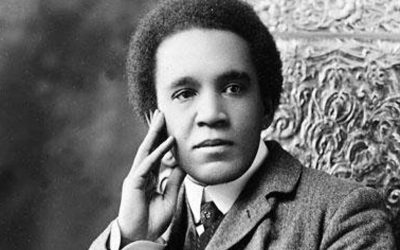Samuel Coleridge-Taylor was a prominent British-Sierra Leonean composer and conductor born on 15 August 1875 and passed away on 1 September 1912. He is often remembered for his choral work “Hiawatha’s Wedding Feast”, which contributed significantly to his fame. Coleridge-Taylor was of mixed-race descent and achieved notable success, earning him the moniker “African Mahler” by white New York musicians during his tours of the United States in the early 1900s.
Early life
Coleridge-Taylor was born in Holborn, London, to Alice Hare Martin, an Englishwoman, and Daniel Peter Hughes Taylor, a Krio man from Sierra Leone who had studied medicine in London. His parents were not married, and his father had returned to Africa without knowing that Alice was pregnant. Coleridge-Taylor was brought up by his mother and her family, who recognised his musical talent early on. His grandfather funded his violin lessons, and at the age 15, he began studying at the Royal College of Music, where he shifted his focus to composition. Upon completing his degree, he became a professional musician, working as a professor at the Crystal Palace School of Music and conducting the orchestra at the Croydon Conservatoire.
Career
Coleridge-Taylor’s career took off following the success of “Hiawatha’s Wedding Feast” in 1898. He toured the United States thrice in 1904, 1906, and 1910, where he gained an interest in his paternal racial heritage and met notable individuals like W. E. B. Du Bois and Paul Laurence Dunbar. He participated in the First Pan-African Conference in 1900 as the youngest delegate. His attempt to integrate traditional African music into the classical tradition mirrored the efforts of composers like Johannes Brahms and Antonín Dvořák with Hungarian and Bohemian music, respectively. He also sought to set poems by Paul Laurence Dunbar and other black individuals to music, drawing from his Sierra Leonean ancestry and African musical heritage.
Later life and legacy
Unfortunately, composers during Coleridge-Taylor’s time often sold their music rights outright to earn immediate income, which led to a financial struggle for Coleridge-Taylor despite his success. He passed away at the age of 37 due to pneumonia, with his financial stress often attributed as a contributing factor. His death brought attention to the financial struggles faced by composers, contributing to the formation of the Performing Right Society.
His legacy continued with his work being widely performed, and his family, including his children Hiawatha and Gwendolen Avril, also pursued music careers. His composition “Hiawatha’s Wedding Feast” remained particularly popular and was performed extensively, including large costumed ballet versions conducted by Malcolm Sargent at the Royal Albert Hall from 1928 to 1939. Coleridge-Taylor’s impact was not only felt in the musical realm but also in challenging racial prejudices and promoting African and African-American culture through his compositions.






Leave a Reply